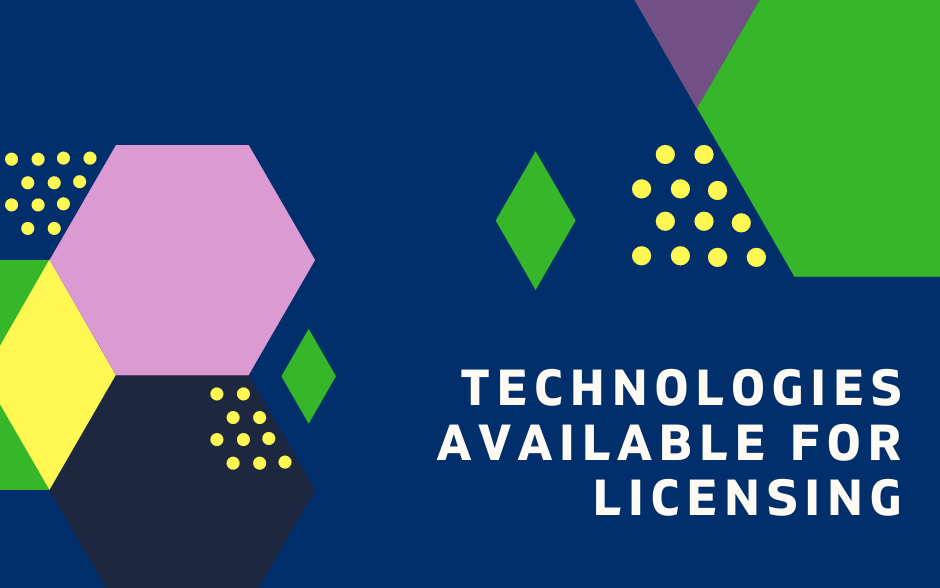Meet Us at the AUTM Annual Meeting

Meet Us at the AUTM Annual Meeting
 Our licensing team will be attending the AUTM Annual Meeting and available for one-on-one meetings about our technologies, or partnering with Brandeis in general. Meet Executive Director and Associate Provost for Innovation Rebecca Menapace, MBA, CLP, Rajnish Kaushik, PhD, MBA, Director of Licensing and Strategic Alliances and Rong Zhou, PhD, Licensing Associate at the online conference.
Our licensing team will be attending the AUTM Annual Meeting and available for one-on-one meetings about our technologies, or partnering with Brandeis in general. Meet Executive Director and Associate Provost for Innovation Rebecca Menapace, MBA, CLP, Rajnish Kaushik, PhD, MBA, Director of Licensing and Strategic Alliances and Rong Zhou, PhD, Licensing Associate at the online conference.

Another season brings another series of innovations at Brandeis, including breakthroughs in materials science and cancer therapies. Check out our latest inventions in this email.
As always, if you are interested in our technologies or wish to explore opportunities to work with Brandeis inventors, email the Office of Technology Licensing team at otl@brandeis.edu
Bing Xu, Jiaqing Wang
Antimicrobial drug resistance demands novel approaches for improving the efficacy of
antibiotics, especially against Gram-negative bacteria. This invention reports that conjugating a diglycine (GG) to an antibiotic prodrug drastically accelerates intrabacterial ester-bond hydrolysis required for activating the antibiotic.
The emergence of multidrug resistant (MDR) bacteria remains a serious problem in
biomedicine. However, the antibiotic supply in clinical pipeline is limited. Therefore, there is an urgent need for developing new antimicrobial approaches against MDR bacterial pathogens.
In comparison to developing a new drug which requires years of extensive testing, modifying existing antibacterial drug to form derivatives with the higher efficacy is much more rapid, lower-cost and safer.
Grace Han, Mihael Gerkman, Yuran Shi, Jennifer Taufan
The majority of damage in engine components occurs during a cold start, due to the
frozen/viscous oil in the engine at low temperatures. Our primary product will be a double-layered engine oil pan with an outer layer filled with heat storage materials (i.e. PCMs) which release heat when optically triggered. The owners of gas or diesel-powered vehicles and the corporations that operate oil-lubricated machinery, such as airplane engines and boat engines that are impacted by cold weather, will be our major potential customers.
Our team has developed composites of phase-change materials (PCMs) and light-responsive molecules, which absorb the waste heat generated from a running engine, store the heat overnight, and release the heat instantly to warm up the engine once triggered by blue LED light. They have designed an optimized and custom-designed oil pan integrating the composites, which provides an instant source of heat (~300 J/g) to cold oil when triggered.
Grace Han, Mihael Gerkman, Eli Kengmana, Xiang Li
Organic photo-switching systems absorb solar radiation, store energy in chemical bonds, and release it in the form of thermal energy upon triggering. The capability of the system to store energy for a variable time frame (hours, days, weeks) and the triggerable release of the stored energy present exciting opportunities in solar energy harvesting and potential applications in de-icing of windshields and windows, wearable heating devices, and general heating systems.
A novel class of light-responsive molecules was discovered to show adhesive properties which can be modulated by the irradiation with UV light
Christopher J. Doona, Irving R. Epstein, Florence Feehery, Kenneth Kustin
There is a critical need for self-decontaminating, self-deodorizing, self-disinfecting, and/or self cleaning surfaces, particularly for textiles used in individual protective garments, to respond to two types of threats: i) communicable diseases and antibiotic-resistant pathogens in hospitals, healthcare, and nursing settings, and ii) chemical and biological warfare agents. In both cases, it is crucial to protect the health care professionals providing services, patients, emergency first-responders, deployed military personnel, and others from potential exposure to etiological agents or disease-carrying vectors, and to prevent contaminated clothing from acting as a source of further spread of contamination to themselves or anyone else.
This invention uses a novel chemical method to functionalize various surfaces with a stimuli responsive hydrogel polymer that responds to external stimuli by taking up, storing, and controllably releasing gaseous or aqueous chlorine dioxide (ClO2) for the purposes of inactivating harmful microorganisms, neutralizing odors, or preventing cross-reactions with storage container surfaces. In clothing or garments, the stimuli-responsive hydrogel polymer could initiate the release of disinfectant to self-decontaminate microorganisms that cause infections or rashes and irritations on the wearer, and to self-deodorize the garment from sweat, body odors, or by-products of microbial metabolism.
All Available Technologies
Discover available technologies in
Explore all our technologies available for licensing:

 Our licensing team will be attending the AUTM Annual Meeting and available for one-on-one meetings about our technologies, or partnering with Brandeis in general. Meet Executive Director and Associate Provost for Innovation Rebecca Menapace, MBA, CLP, Rajnish Kaushik, PhD, MBA, Director of Licensing and Strategic Alliances and Rong Zhou, PhD, Licensing Associate at the online conference.
Our licensing team will be attending the AUTM Annual Meeting and available for one-on-one meetings about our technologies, or partnering with Brandeis in general. Meet Executive Director and Associate Provost for Innovation Rebecca Menapace, MBA, CLP, Rajnish Kaushik, PhD, MBA, Director of Licensing and Strategic Alliances and Rong Zhou, PhD, Licensing Associate at the online conference.
